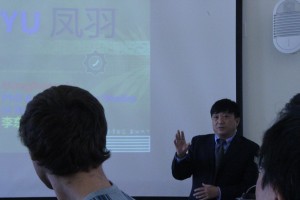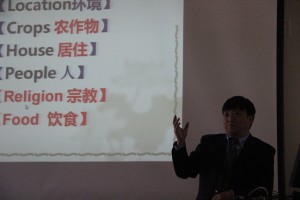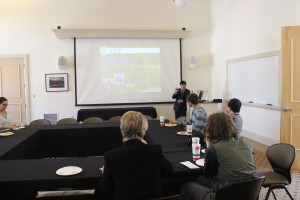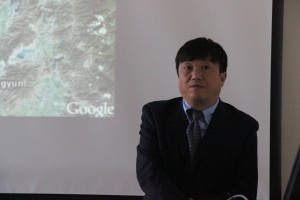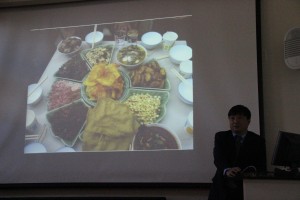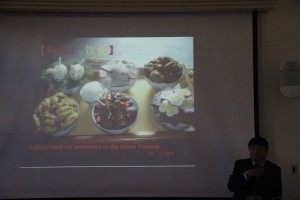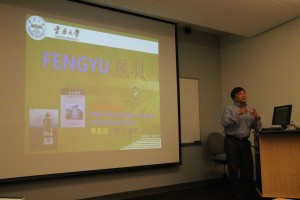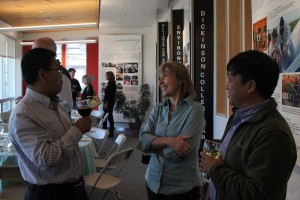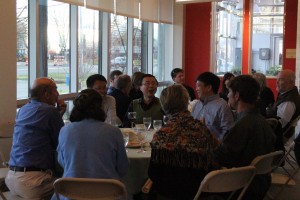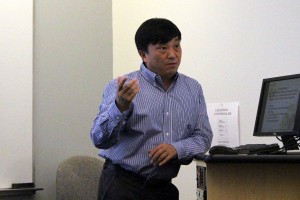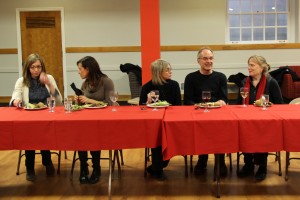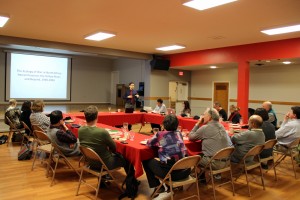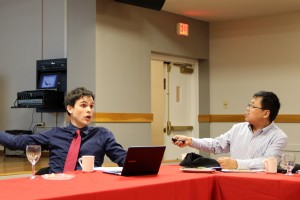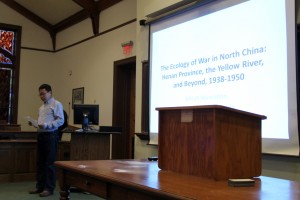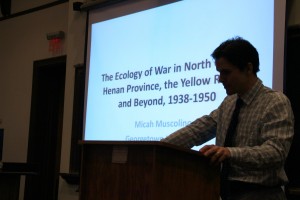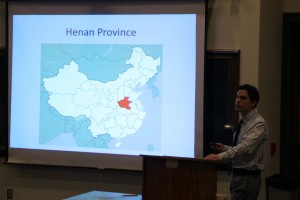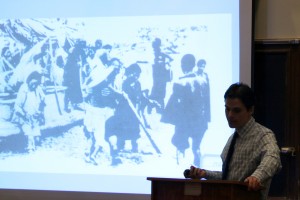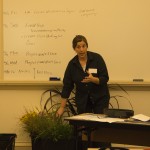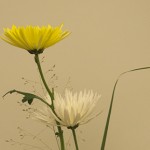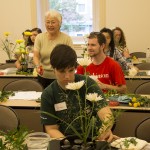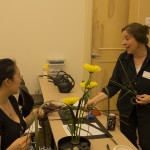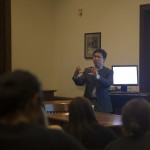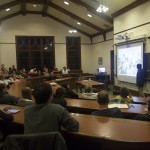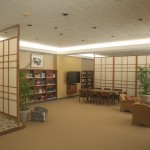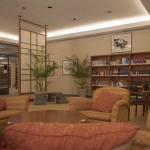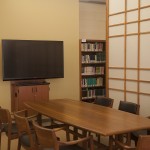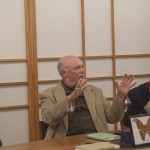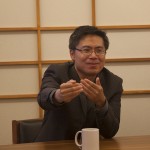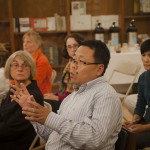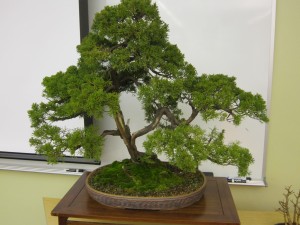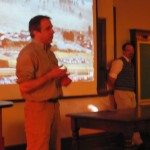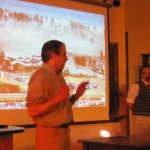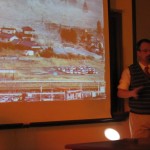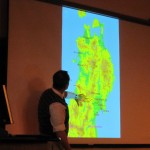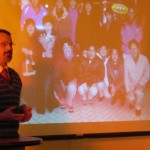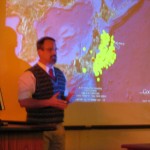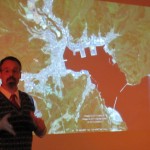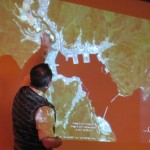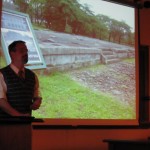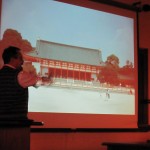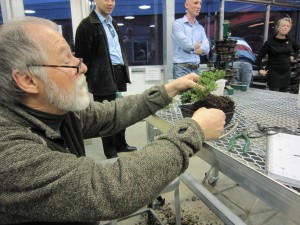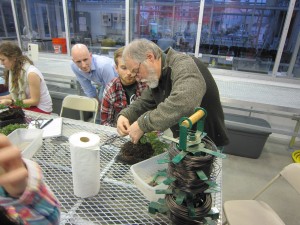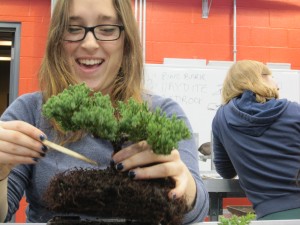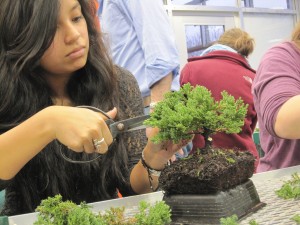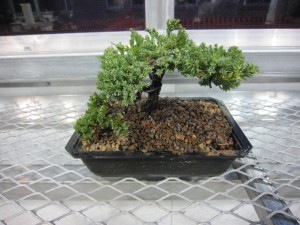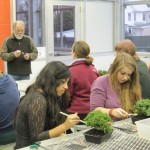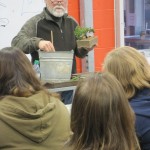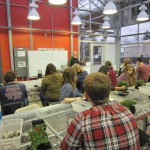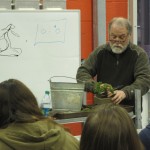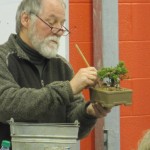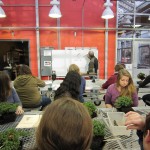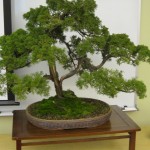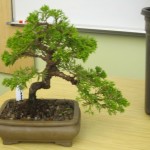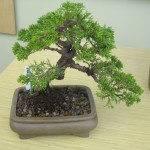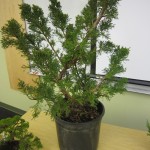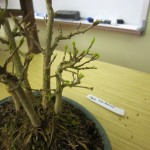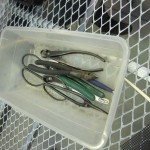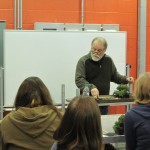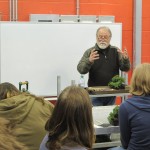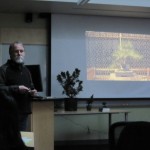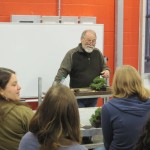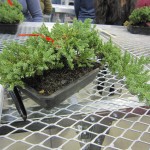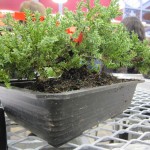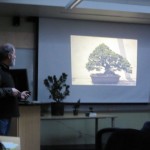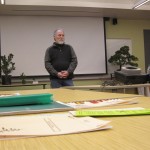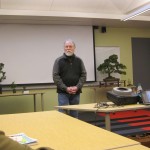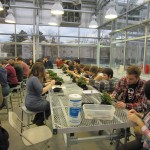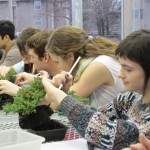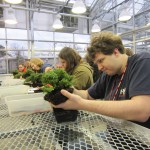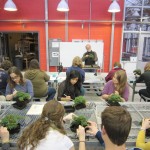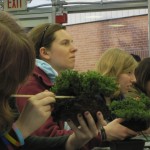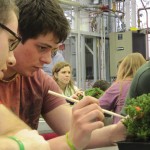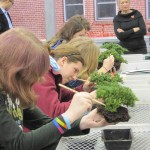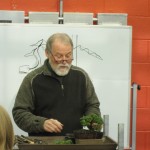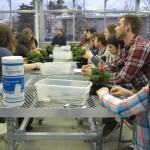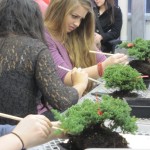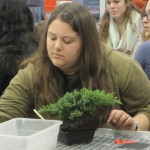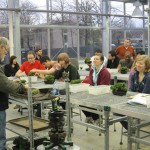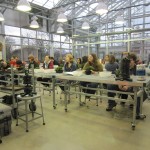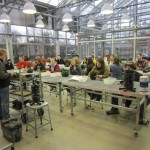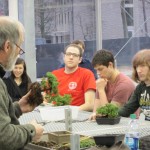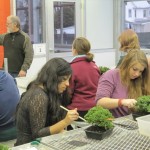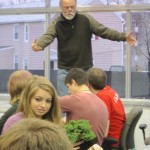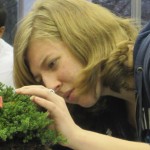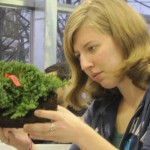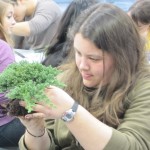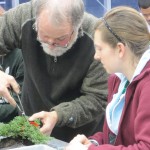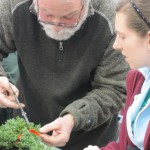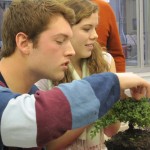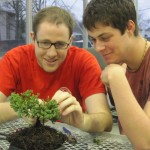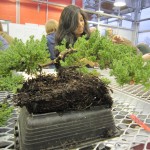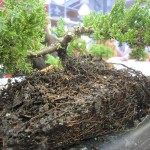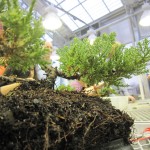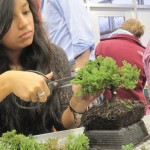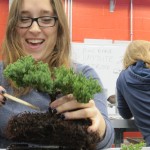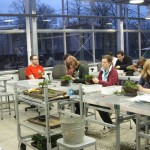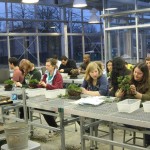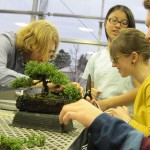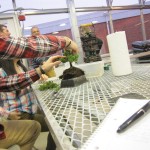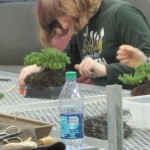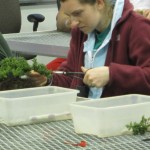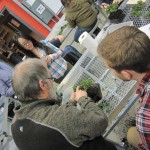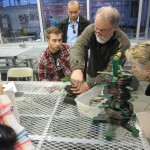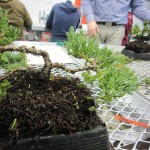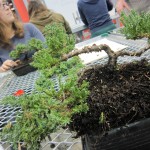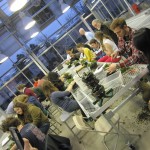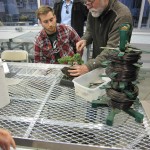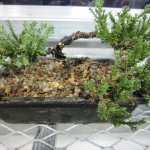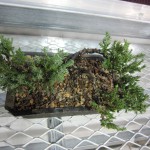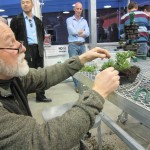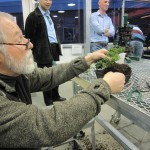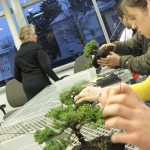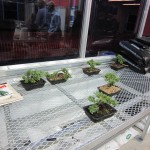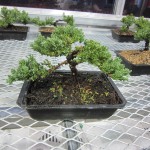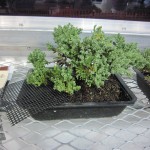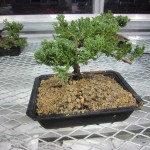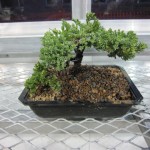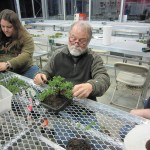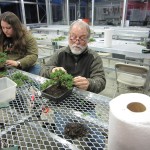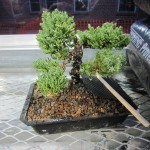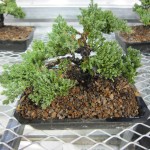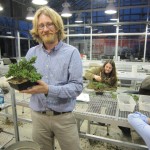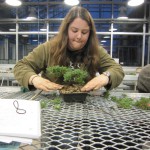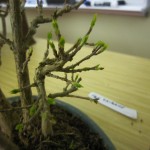On April 9th and April 16th, 2014, Professor Li Donghong from Yunnan University in China gave lectures to students and faculty on his native village Fengyu. The lectures covered the location and geography of the local area as well as the village’s agriculture, and the local culture including unique architectural techniques used in the area as well as local religious customs, clothing and food.
Category Archives: events
Bonsai Workshop 2014
On April 2nd, 2014 Jim Doyle from Nature’s Way Nursery in Harrisburg, Pa taught a class on Bonsai for students in the East Asian Studies Department. Doyle provided a brief lecture on his own background and experiences with Bonsai and the history of the art. Students then participated in a class in the Inge P. Stafford Greenhouse, in which they pruned and shaped their own bonsai trees.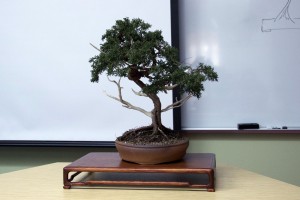
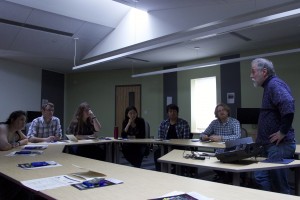
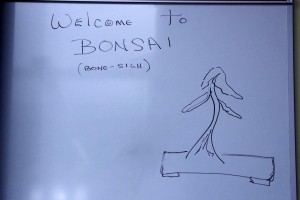
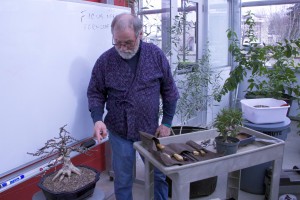
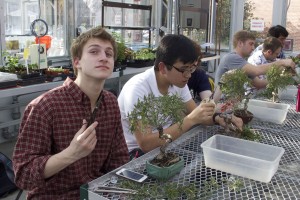
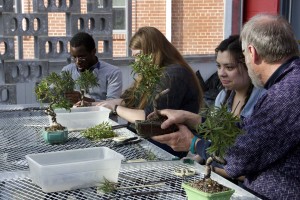
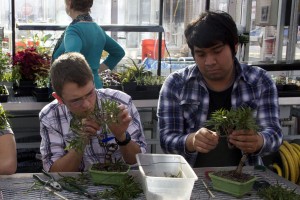
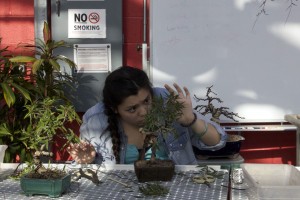
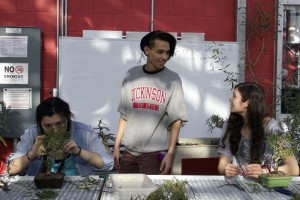
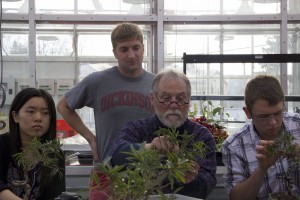
Muscolino Colloquium
On March 18th, 2014 faculty participated in a colloquium discussion with guest speaker Dr. Micah Muscolino on the topic “A Militarized River: The 1938 Yellow River Flood and its Aftermath.” Visiting scholar Professor Kelin Zhang provided an introduction to the fragile ecosystem of the Yellow river basin. Due to flooding caused by regular monsoons, the river basin has a tendency to flood frequently, but human intervention has caused even further damage on the fragile ecosystem. The river is a source of sustenance and danger for people residing in the river basin, as deforestation and erosion due to agriculture have caused floods which have destroyed the homes of several people.
Prof. Muscolino discussed the historical records of the flood and the use of the hydraulics and flooding in warfare during the late 1930s. He stressed the role the need for energy plays in shaping military campaigns, and how through hydraulic warfare, political elites put the power of the state over the welfare of the local people. After the end of the war the floods continued, causing shocks on the ecosystem. Additionally, Prof. Muscolino discussed his research process in writing his upcoming manuscript, and the role of existing records on river management in China.
Additionally, on March 19th, Prof. Muscolino gave a public presentation entitled “The Ecology of War in North China.” In this lecture, he spoke about the role of war in modern Chinese politics and culture, and its impact on the country’s environmental history. The lecture highlighted the ways in which war shapes human’s interactions with nature through the use of the Yellow River during and after World War II. As a source of energy, Japanese forces built dikes along the river. The Nationalists destroyed these dikes, flooding the surrounding area and upsetting the ecosystem and the agriculture. Prof. Muscolino also discussed debates around energy that were taking place and the semantics of the word “power” in Chinese. Finally, Prof. Muscolino explored the ensuing flood and famine in Henan Prefecture in 1942-1943 along with the resettlement and reconstruction that took place in the following years. Although human intervention had repeatedly damaged the already fragile ecosystem of the river basin through agriculture and wartime flooding, human assistance was also able to restore the land.
Ikebana Workshop: October 2 2013
On October 2, 2013, a small Ikebana workshop was conducted by Ellen Kelly, a member of Harrisburg Chapter, Ikebana International.
Ellen Kelly lived in Japan for over 5 years and fell in love with Ikebana. She was excited to share this part of Japanese culture with the students.
Students were taught about the origins of Ikebana and were guided through creating their own pieces.
Funding for the workshop was generously provided by the department of East Asian studies, and the Luce Foundation.
Public Lecture with Fa-Ti Fan: Science, Earthquakes, and Politics in Mao’s China: September 19, 2013
- Guest speaker Professor Fan, giving his lecture
- Professor Fa-ti Fan gives his lecture to both students and professors.
Following the talk about Natural History in China and the West, guest speaker Professor Fa-ti Fan of Binghamton University, held a public lecture titled Science, Earthquakes, and Politics in Mao’s China at Denny Hall.
He discussed the understanding of earthquakes during the time of Mao politics, and the use of science to try and predict future earthquakes during this period.
After his lecture, he fielded questions from both students and professors.
Natural History in China and the West, September 18, 2013
On September 18, 2013, a colloquium featuring Professor Strand, Professor Ashton Nichols, and guest speaker Professor Fa-ti Fan of Binghamton University, was held in the newly remodeled Koh room, also known as the East Asian Studies Room, in Dickinson’s Waidner-Spahr Library.
Using the newly installed television screen and furniture, Prof. Fan presented his research on the study of the natural world in China, particularly the use of natural resources in China from historical to modern times.
Funding for the Koh room update was generously provided by the department of East Asian studies, the Kelly Newton fund, and the Luce Foundation.
Bonsai Festival April 20th
Luce Initiative on Asian Studies and the Environment
On April 20th, a group of Dickinson students will travel to a regional bonsai festival held in Grantville, PA. The festival, known as the Mid-Atlantic Bonsai festival, will give students and festival-goers the opportunity to observe an extensive array of professional bonsai trees as well as attending lectures and discussions by experts. For interested parties, the festival spans April 19th to the 21st at the Holiday Inn Harrisburg-Hershey.
Seismic Japan Lecture February 27th
Luce Initiative on Asian Studies and the Environment
Andy Moore gave a private colloquium on the 26th of February to a group of professors involved in our new Seismic Japan program. On Wednesday February 27 at 4:30 in Denny 317, he gave a public lecture on the same topic. He discussed Japan’s history with earthquakes and tsunamis as well as their resilience to natural disasters.
Members of the colloquium are currently reading selections from Gregory Clancey’s Earthquake Nation.
Featured Image: 2011 Japan earthquake aftermath.
If you missed the lecture, here’s what happened:
The lecture centered on tsunami preparedness and how the enormous preparations still allowed the deaths that occurred. The lecture did so by examining such cities as Arahama, Taro, and Sendai. One of his major points was that the coastline was actually quite prepared for a natural disaster, but perhaps the wrong one. He spoke extensively on Japan’s preparation for a tsunami similar to that of 1960 despite the widely known fact that much larger tsunamis had hit Japan in the past. Why didn’t they prepare for the largest tsunami they knew was possible? Smaller topics discussed were sea walls and their effectiveness, coastal forest barriers, and cultural faith in engineering.
Andy Moore is a sedimentologist currently teaching at Earlham College in Indiana. He obtained his undergraduate degree in geology from Carlton College where he filled his distribution requirements primarily with courses pertaining to Japanese culture. He obtained his masters degree and PhD from the University of Washington, where he worked with geologist and tsunami expert Brian Atwater. After years of sedimentology and tsunami research, he turned his focus to cultural perceptions of natural disasters and now wishes to understand the human side of disaster readiness.
At the colloquium: topics discussed included Japanese tsunami history, geological causes of the 2011 tsunami, engineering preparations, and extra-cultural analogues (like the Hurricanes Sandy and Katrina). A handful of professors, all experts in their fields, discussed these topics over dinner. The preparatory readings were Gregory Clancey’s “Earthquake Nation” and a chapter about the Korean panic from Dickinson Professor Alex Bates’ book in progress.
Post Image: Gregory Clancey, Earthquake Nation, cover.
Photo Credit: Aurora Wetherill
Want more information on our Seismic Japan program? Visit our Seismic Japan page!
Bonsai Specialist February 28th
Luce Initiative on Asian Studies and the Environment
Dickinson College has recently constructed the new Stafford Green House attached to Kauffman Hall, in which there are now bonsai plants. On February 28th, the Stafford Greenhouse made its debut with a bonsai class. Jim Doyle, a local bonsai expert, taught Professor Tom Arnold’s plant physiology class and Professor Bates’ class on nature and the environment in Japanese literature and film about the noble bonsai. The students learned the basics of bonsai by working firsthand with young junipers. Jim also brought other more mature bonsai plants for educational purposes. He showed the students what can happen with long-term commitment to this beautiful and meditative art. The Luce Initiavtive on Asian Studies and the Environment grant provided the funding for Jim Doyle’s time, making it a joint effort between the Stafford Greenhouse and the Luce Initiative.
Jim Doyle, our local bonsai expert, runs Nature’s Way Nursery in Harrisburg and is a highly sought after bonsai teacher.
As the event has passed, here are some highlights and photos!
Jim Doyle, a local horticulturist, came to Dickinson College to share his love of bonsai with a lucky group of plant physiology students. He brought 15 small juniper trees, each about 6 years old. He began the lesson by explaining that he originally wanted to be a veterinarian, but began work at a plant nursery while in college and fell in love with horticulture, and eventually bonsai. He describes bonsai as a continual adventure.
What makes a good bonsai?
Jim says that rounded apexes, a short distance between the branches, and small foliage are the keys to a good bonsai.
Looking for more information on bonsai? Visit our bonsai page!
Photo Credit: Aurora Wetherill and Tom Arnold.

